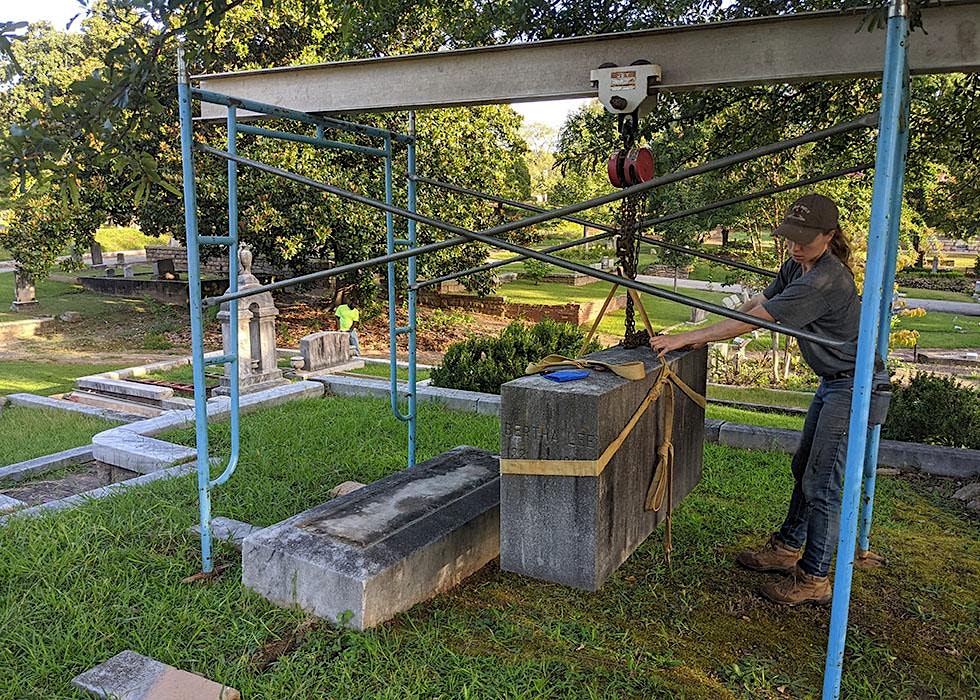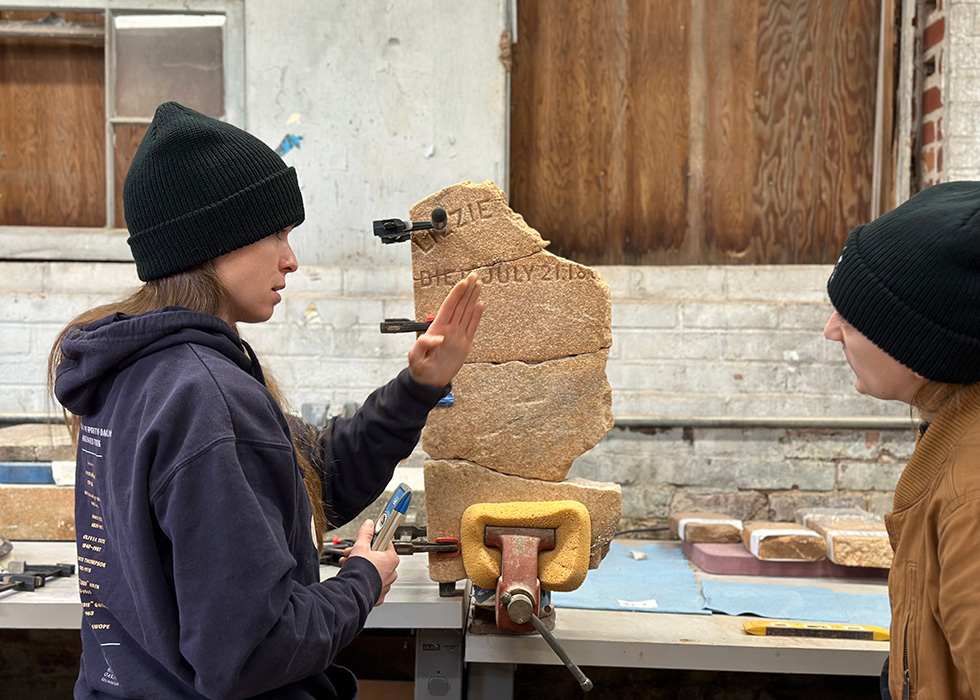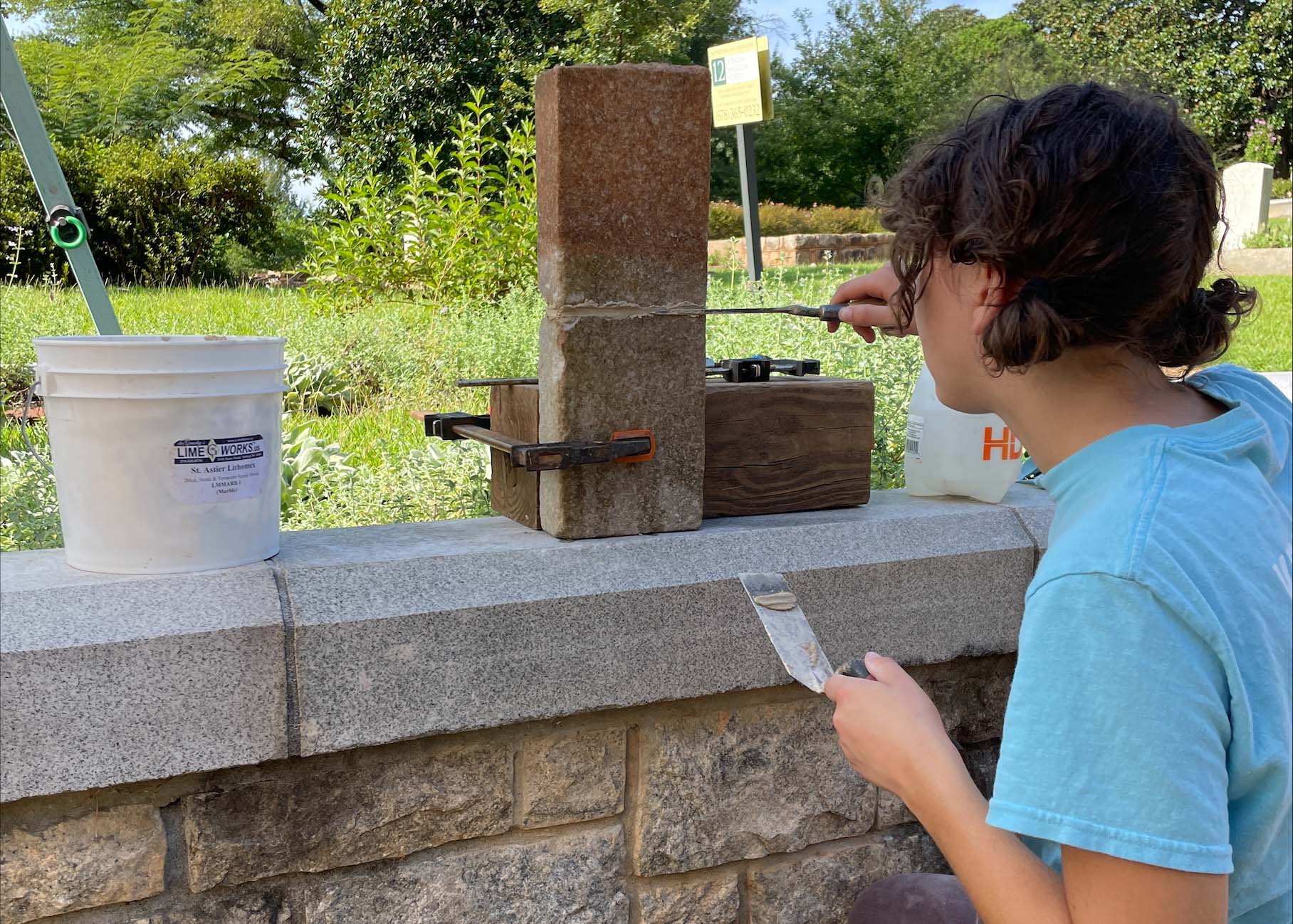
Crane Week with the Preservation Team
As soon as you step through Oakland’s arched entry gate, you are greeted with lively greenery and historic headstones marking the final resting places of people from all walks of life. Although I have only been interning with Historic Oakland Foundation a short while, I have gained tons of knowledge through new experiences every day. One of these experiences back in September was re-setting very large monuments that were leaning and posing a danger to visitors — using a crane!
The first step in the process was assessing which monuments needed to be re-set, a task the preservation team conducts during an annual cemetery-wide “critical restoration survey.” During this year’s survey, seven monuments were identified. Next, the team set a project timeline and discussed both personnel and equipment needs. The team ultimately decided to rent the crane for two separate days— one for monument deconstruction and another for reconstruction about a week later.
Safety was a top priority, both for the people working and for the monuments. These monuments date back to the late 1800s or early 1900s, and some of them were quite fragile. To prevent damage, we made sure that we attached hoist straps in locations where the stone was solid— not in areas with intricate, raised detail.

The project was led by Ashley Shares, HOF’s Director of Preservation, and Sean Diaz, Operations Manager (and former member of the preservation team). While Sean skillfully maneuvered the crane, Ashley navigated the delicate processes of lifting the monument pieces and setting them safely on the ground. Failing to lift and place each piece evenly can cause the edges of the stones to chip off, marring the faces of these beautiful pieces of art. Once all the pieces were deconstructed, we removed the failed bases below and utilized a mechanical tamp to properly compress the soil beneath them. We then poured reinforced concrete foundations. In total, we mixed around 50 bags of concrete for four different monuments.
After the concrete had cured fully, we brought the crane back for reconstruction. Preservation technicians Michael Wettlaufer and Brent Smith carefully set each piece back in place using lead shims and lime mortar to achieve correct level. Ideally, all the monuments would have their joints filled and struck at this time, but because we only had one day, we saved this for later. This was where I finally got my hands dirty and learned my first lessons about pointing. I learned that the joints need to stay damp throughout the process, a condition achieved by frequent misting. I mixed the mortar to the consistency of cookie dough. If the mortar has too dry of a consistency, it would crumble, if the consistency is too wet, it would have slumped. I practiced using a variety of trowels to ensure that it was packed in and there weren’t gaps that could lead to future water damage later. To clean up the surface, I wiped away the excess with a damp sponge, making sure to rewet and wipe on a clean side on every pass. With the surface cleaned, the monument is restored to its former glory.
Preservation at Oakland is a constant, ongoing effort. To learn more, visit https://oaklandcemetery.com/preservation-and-restoration/




